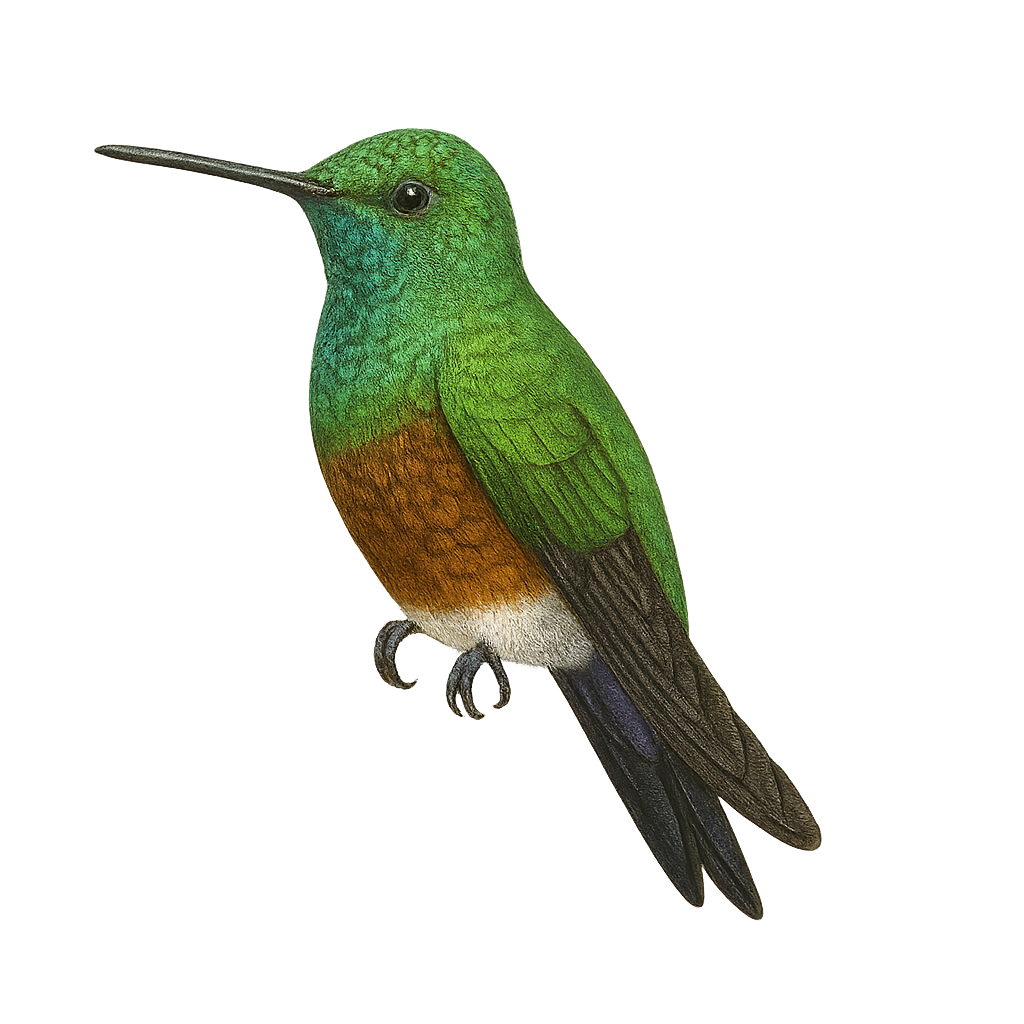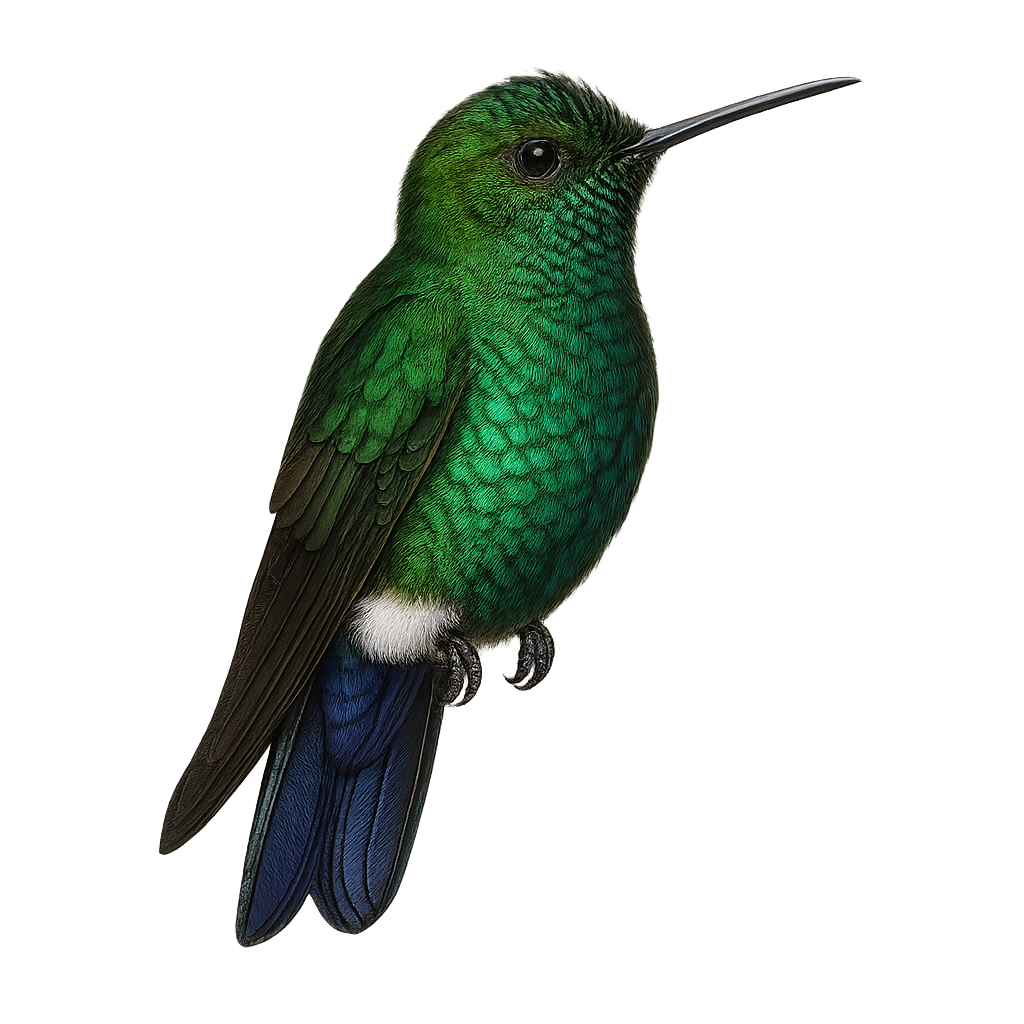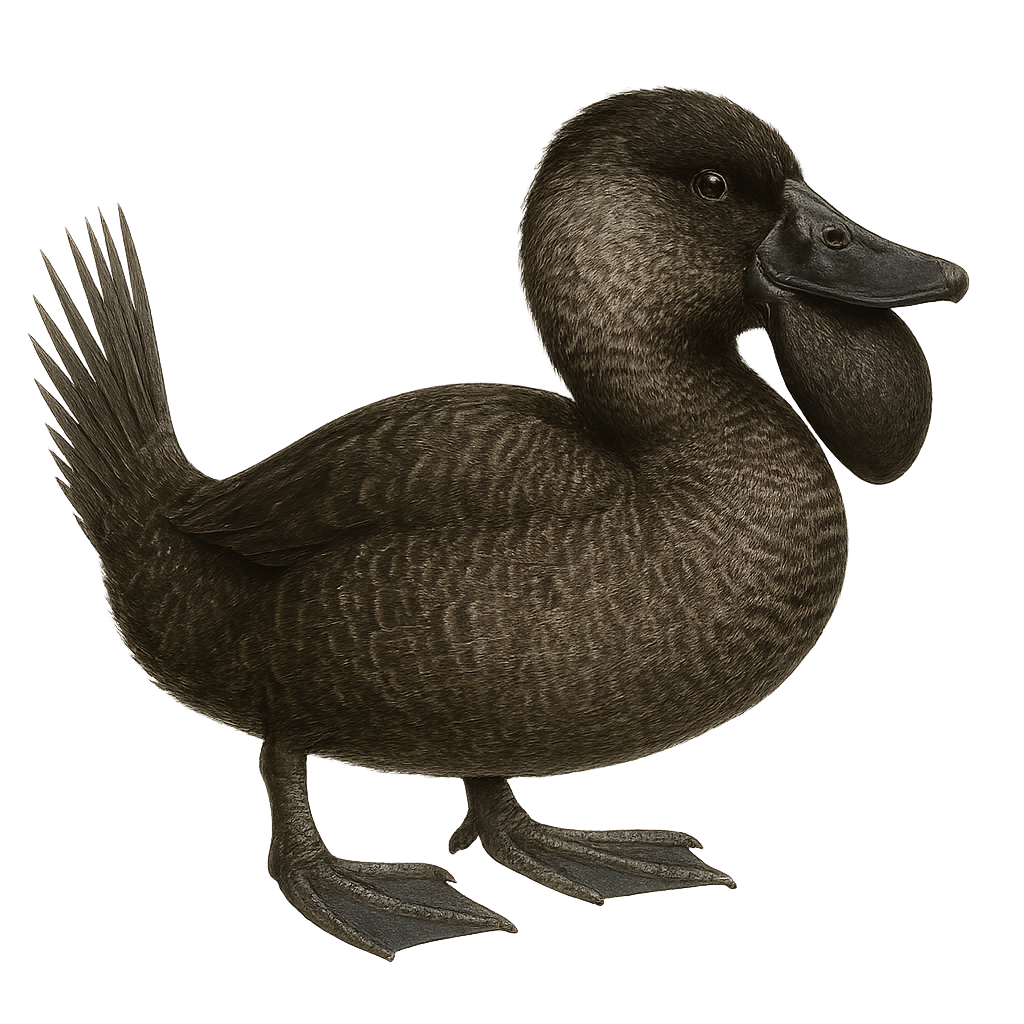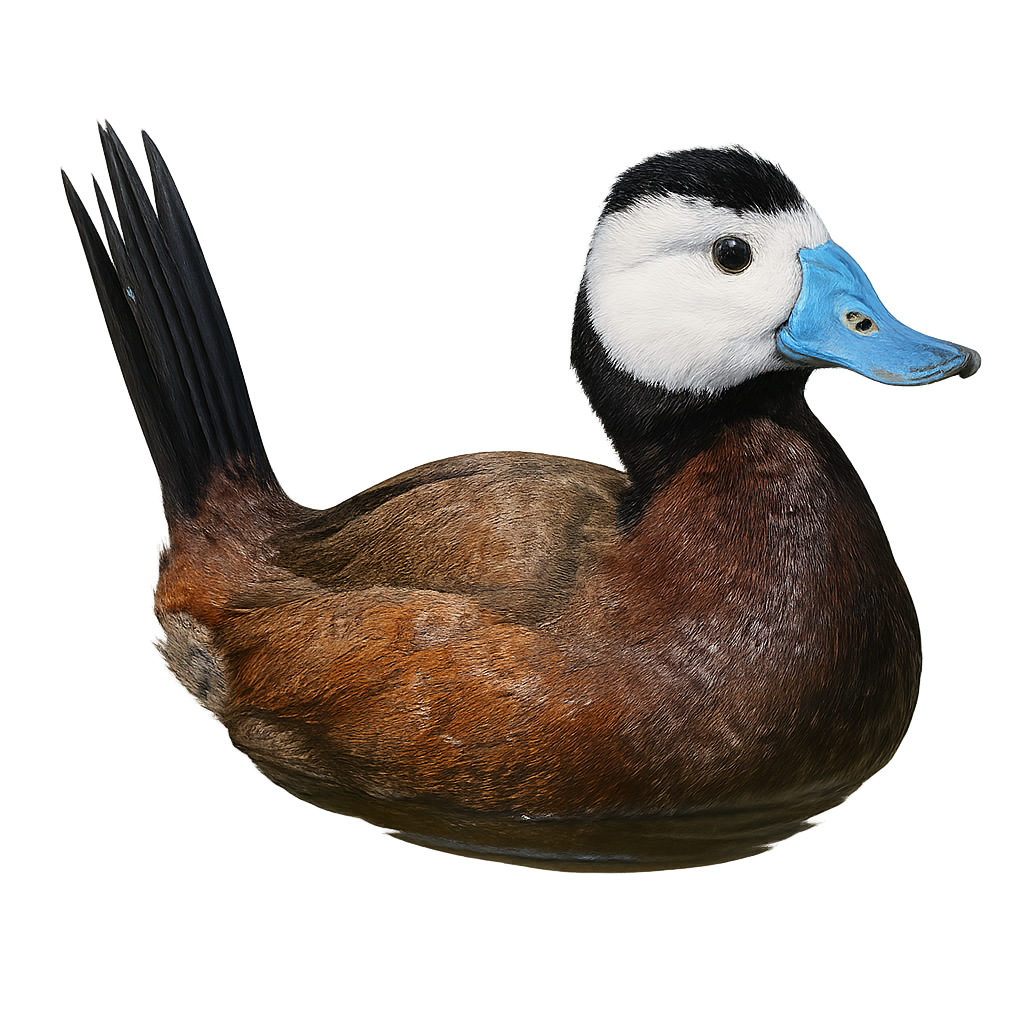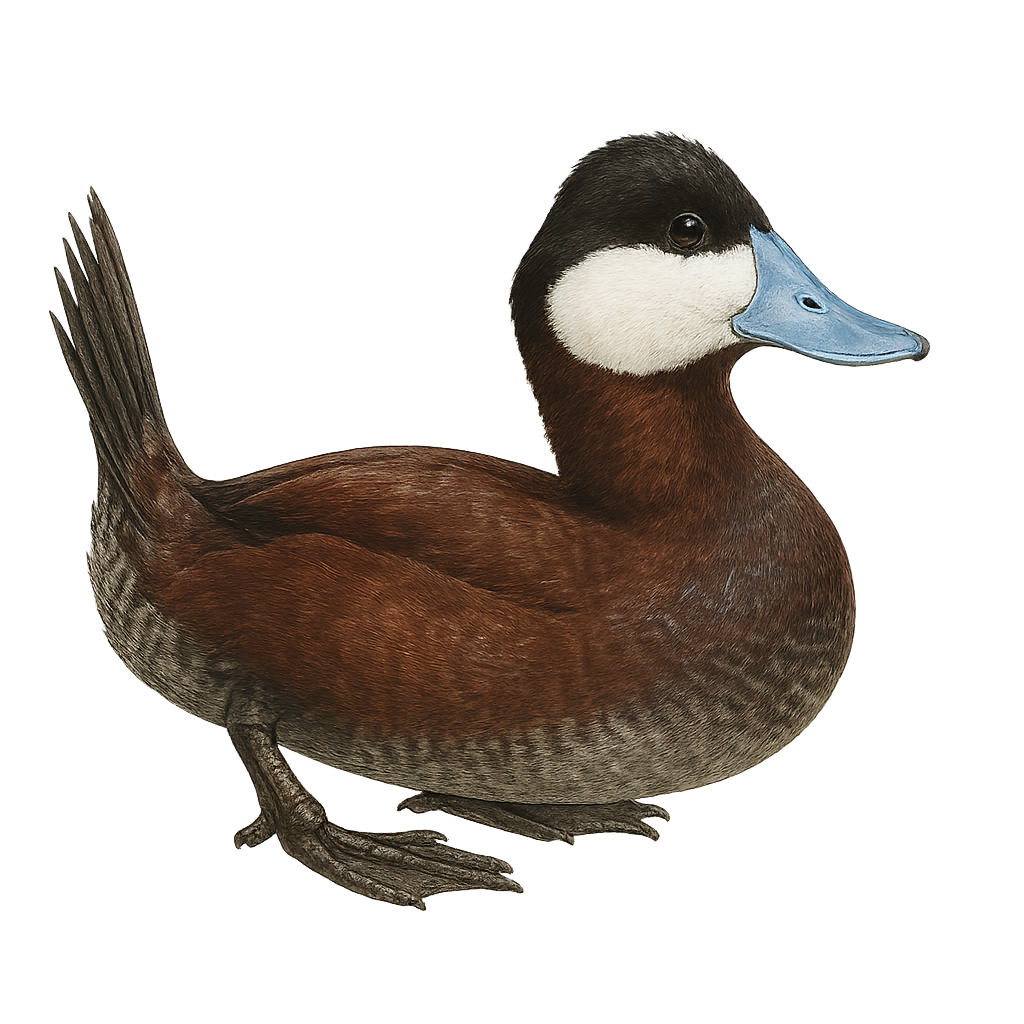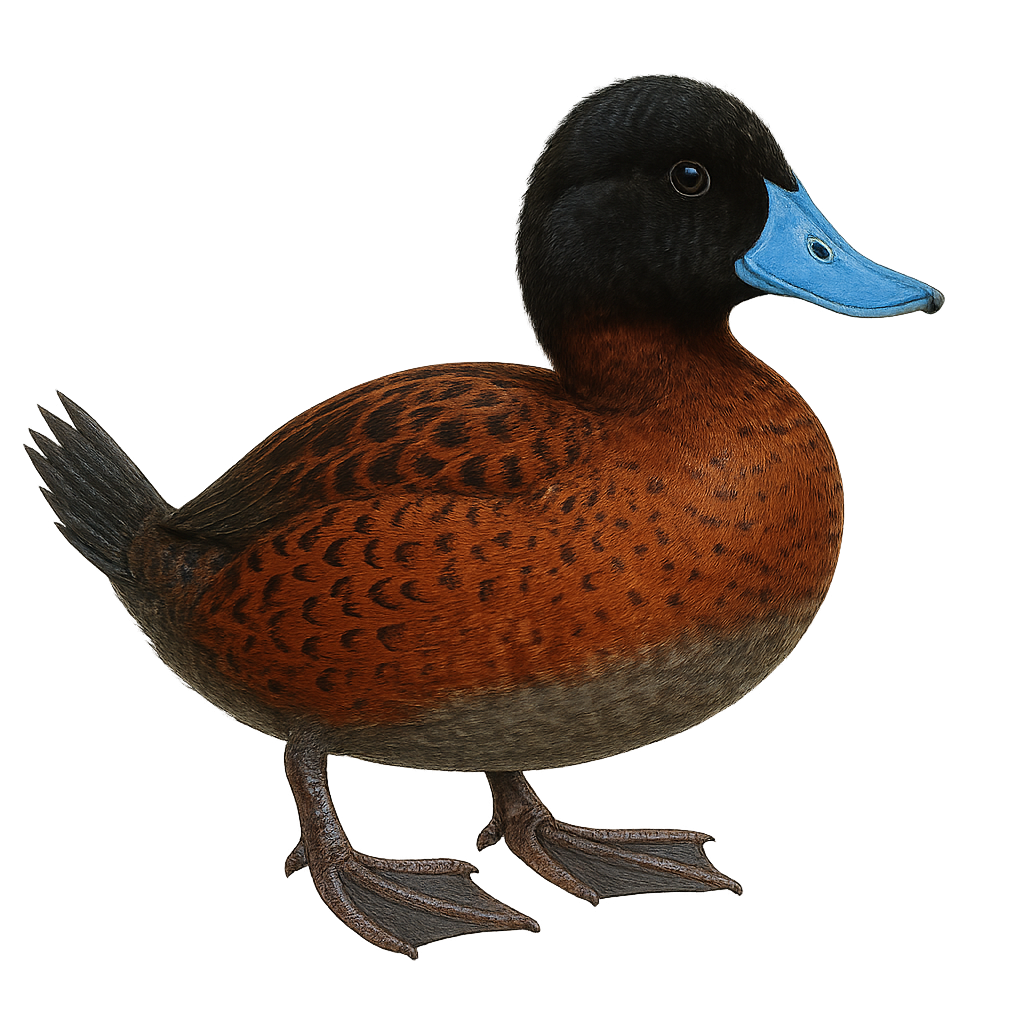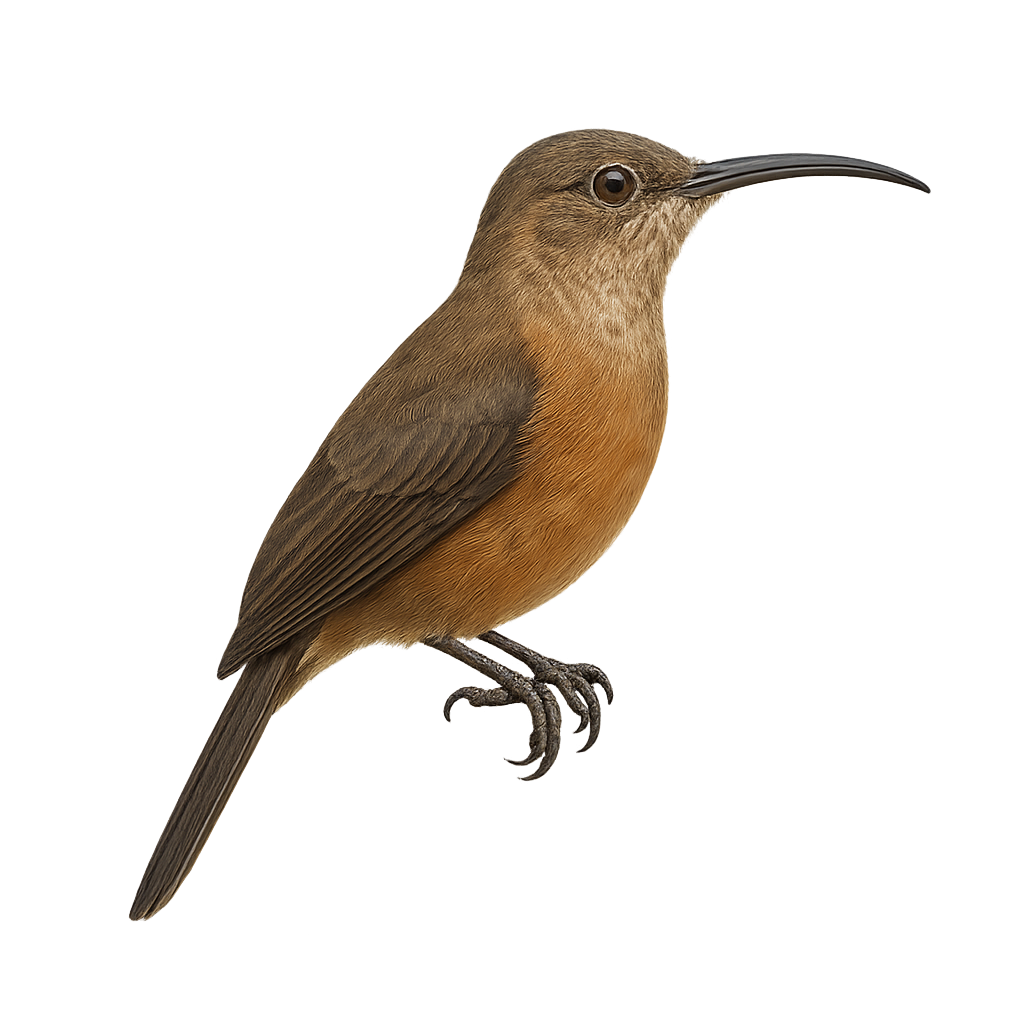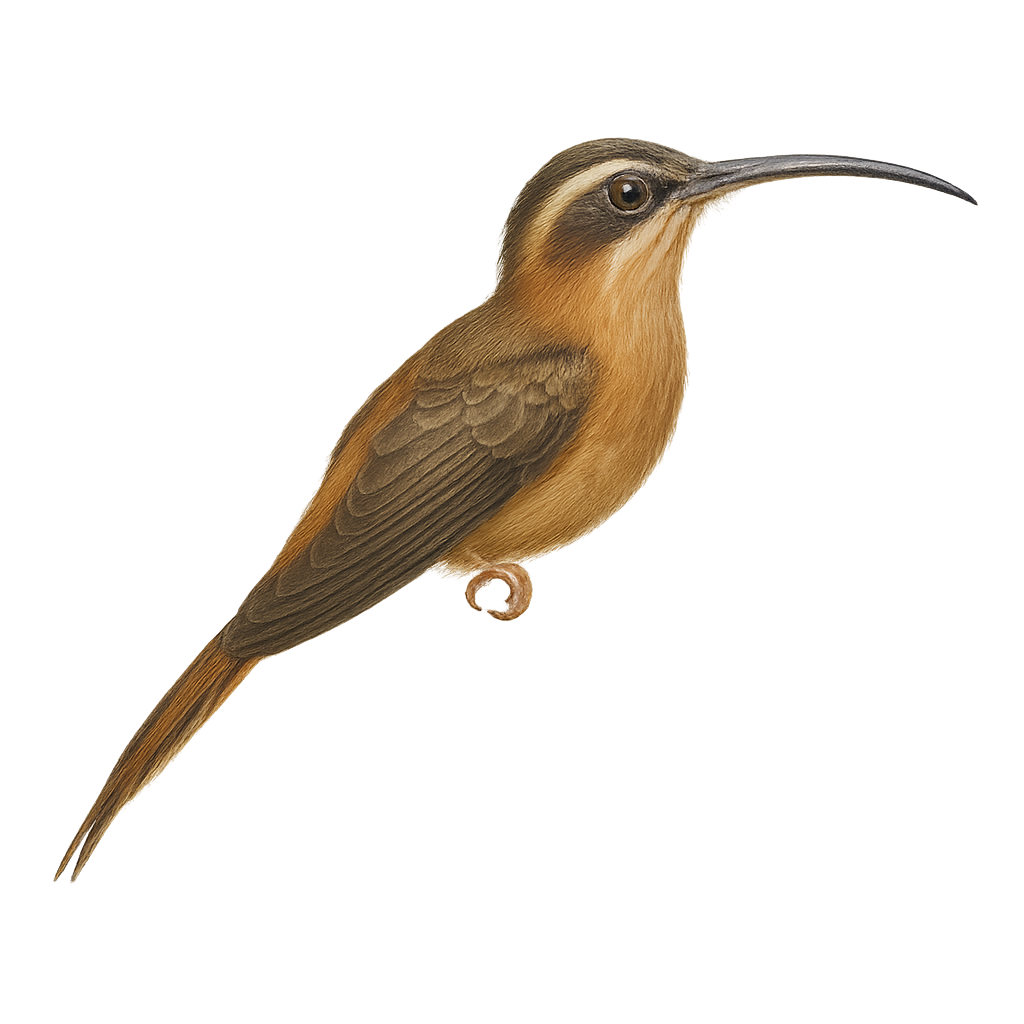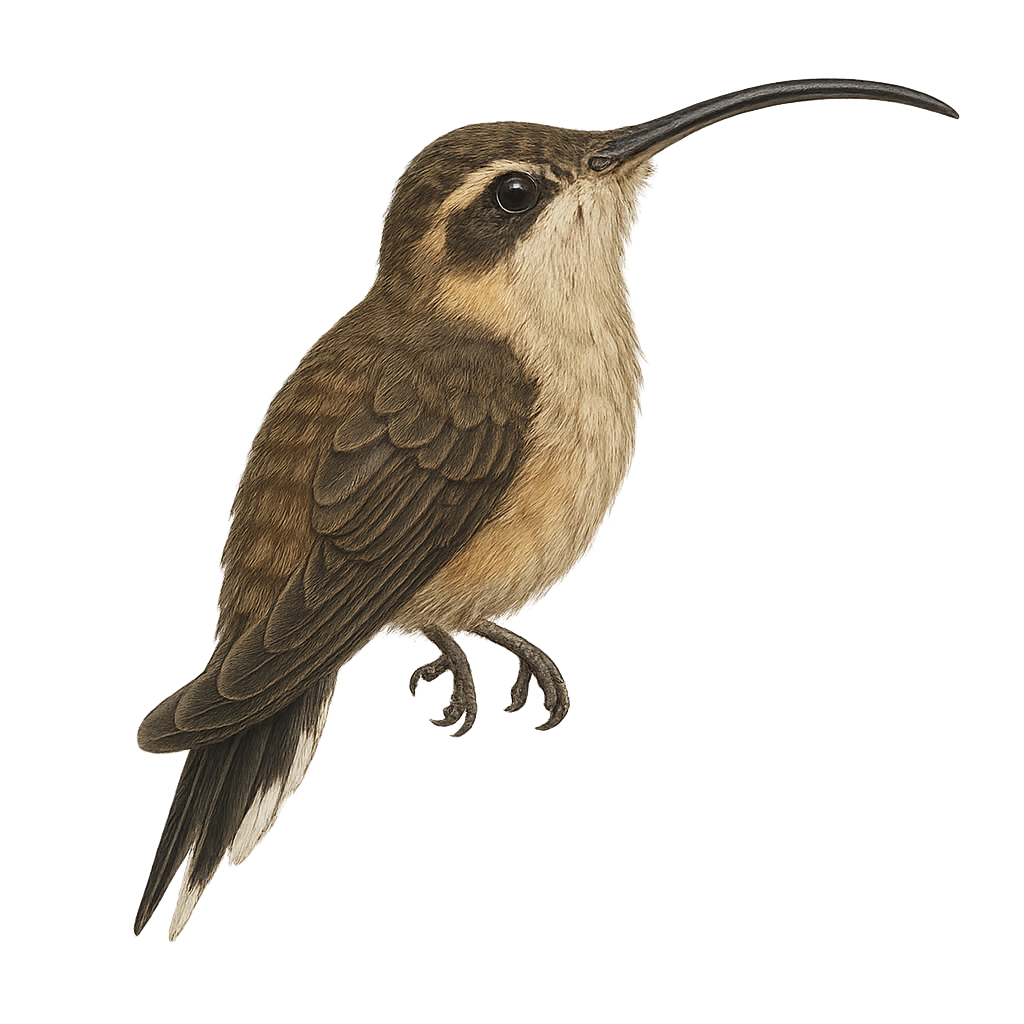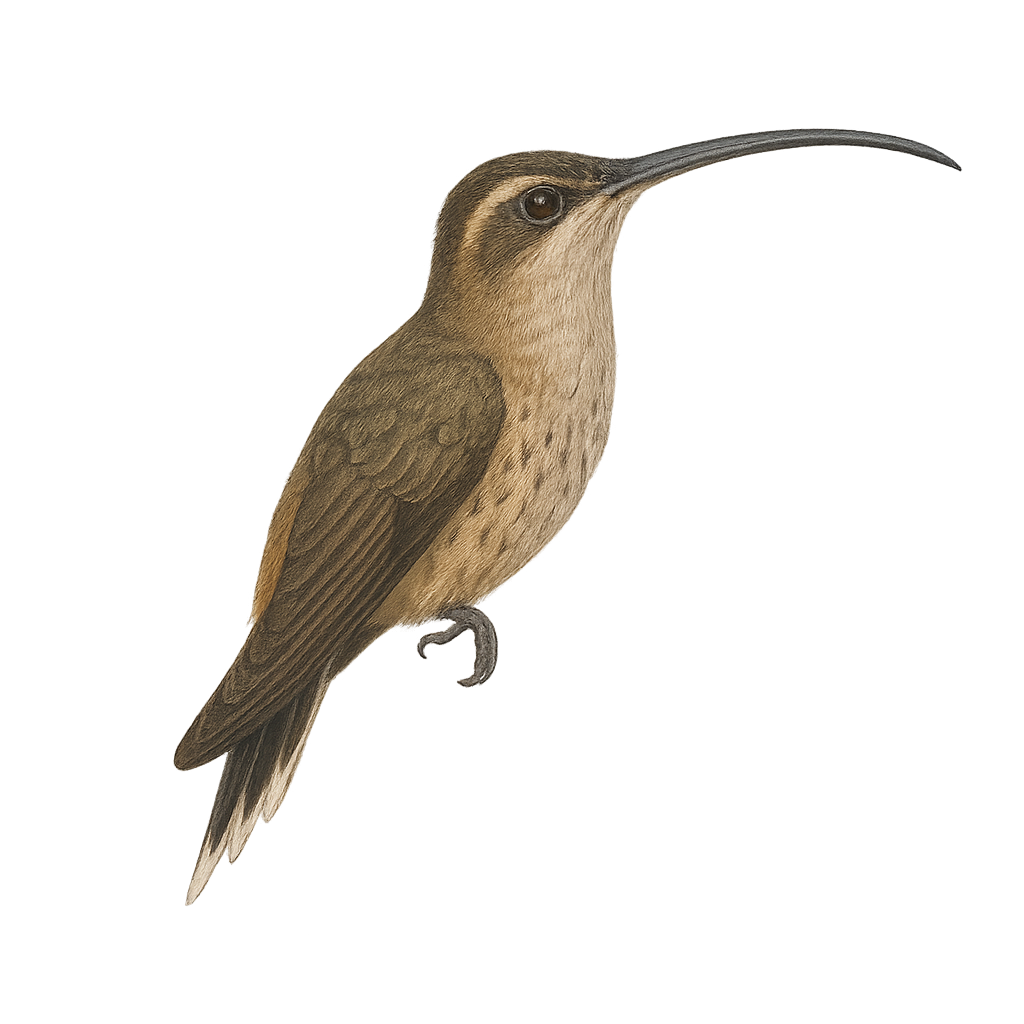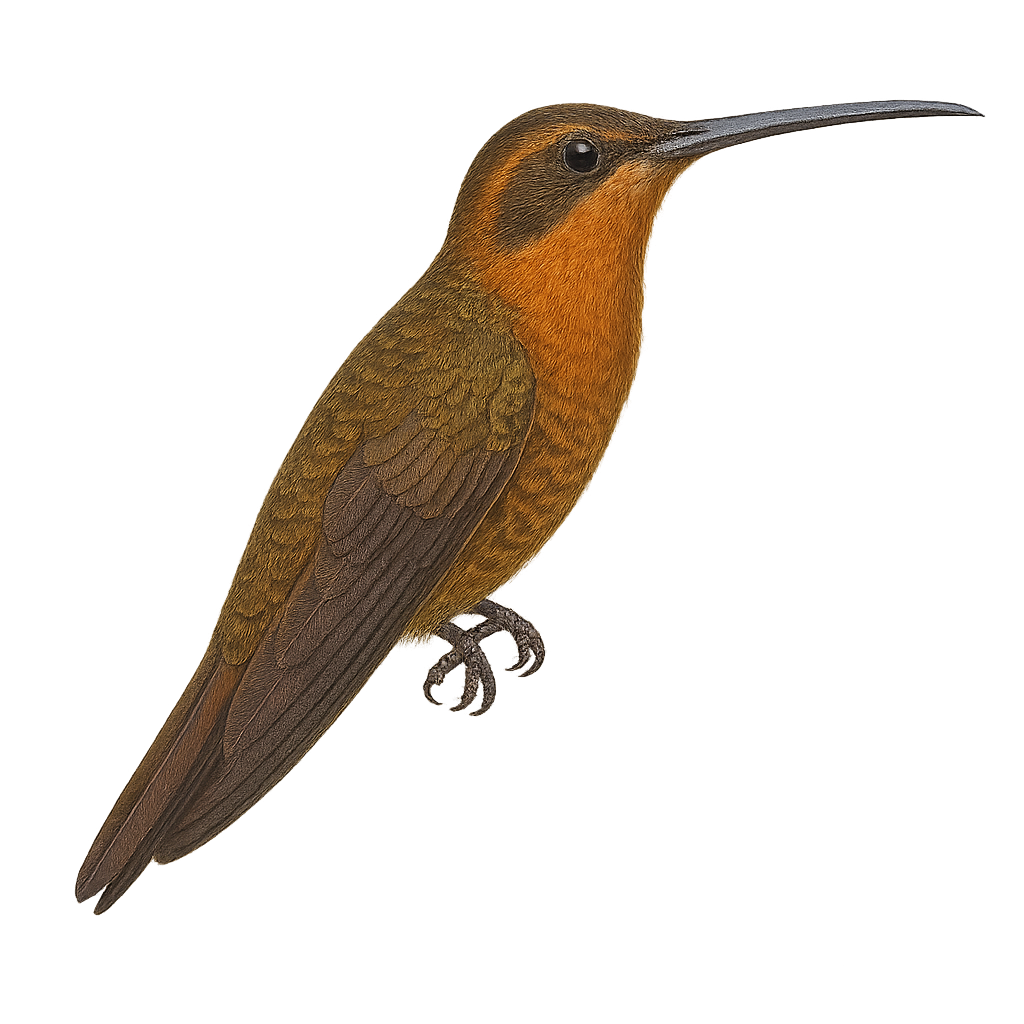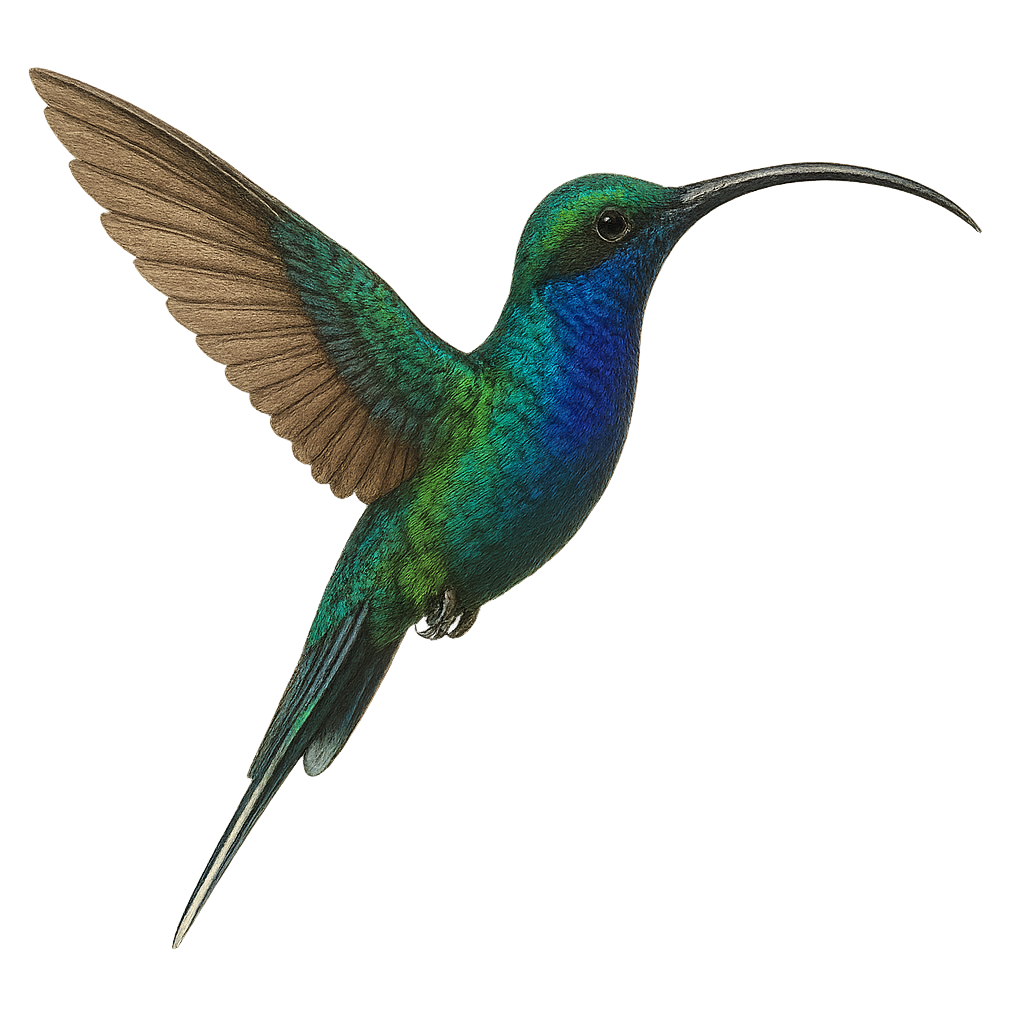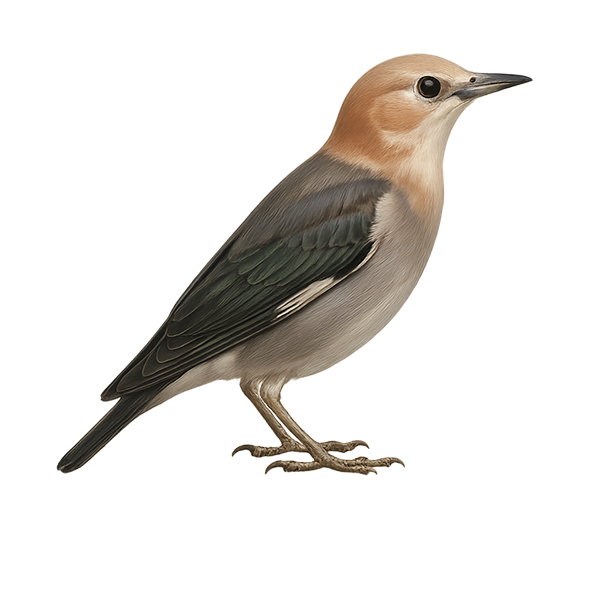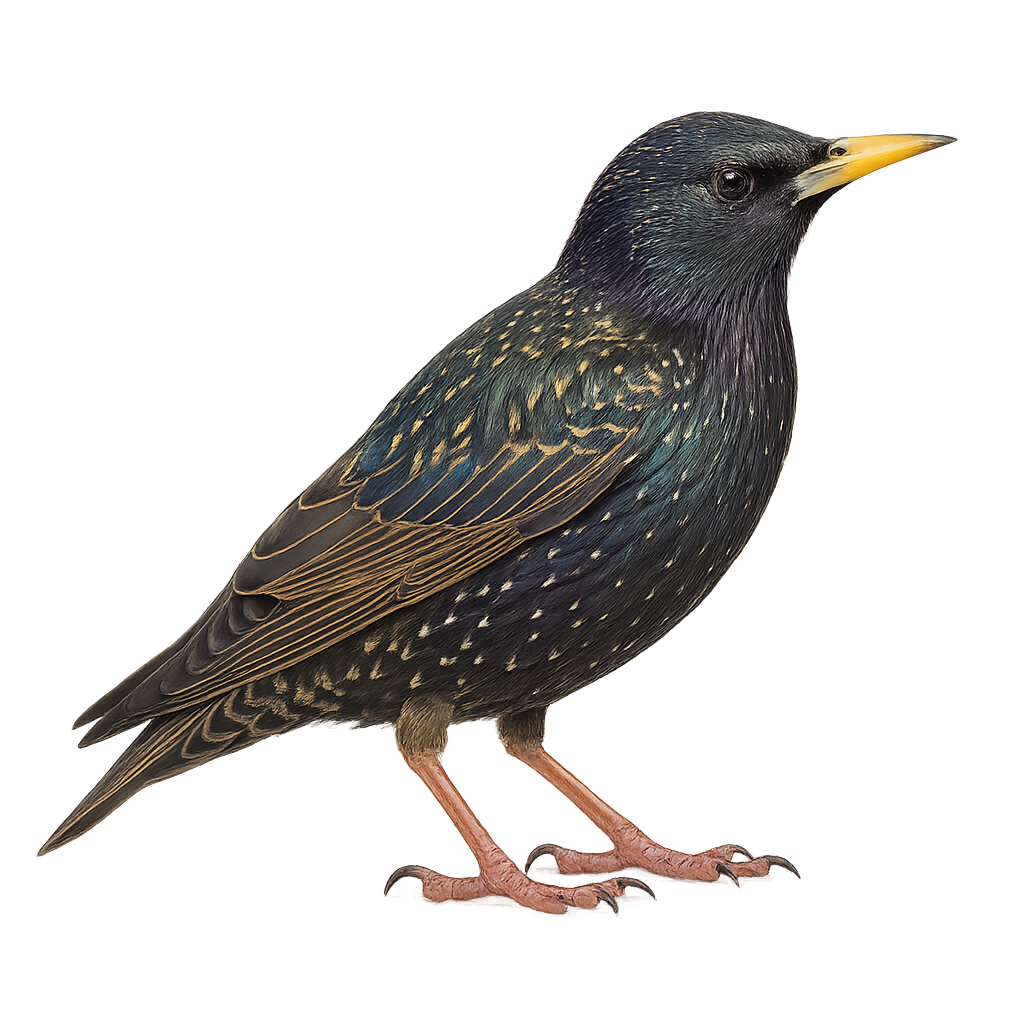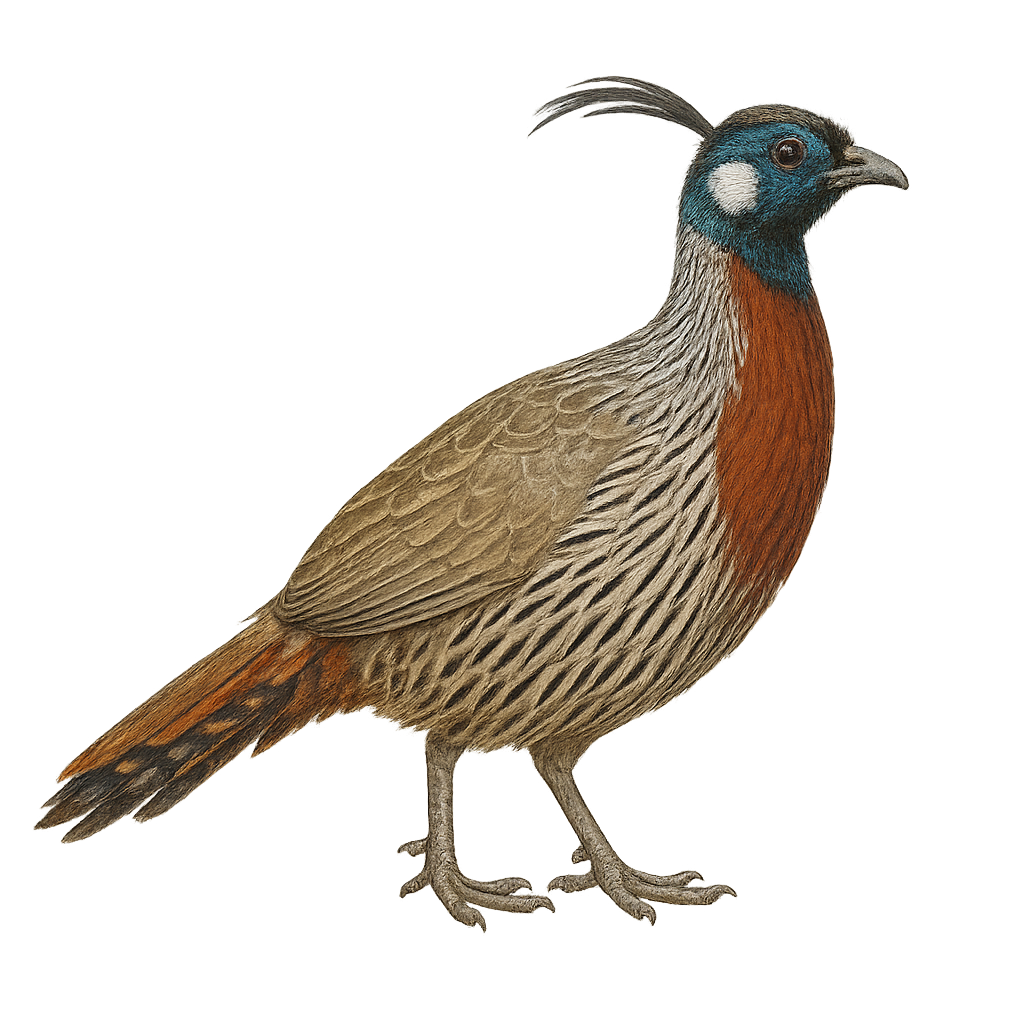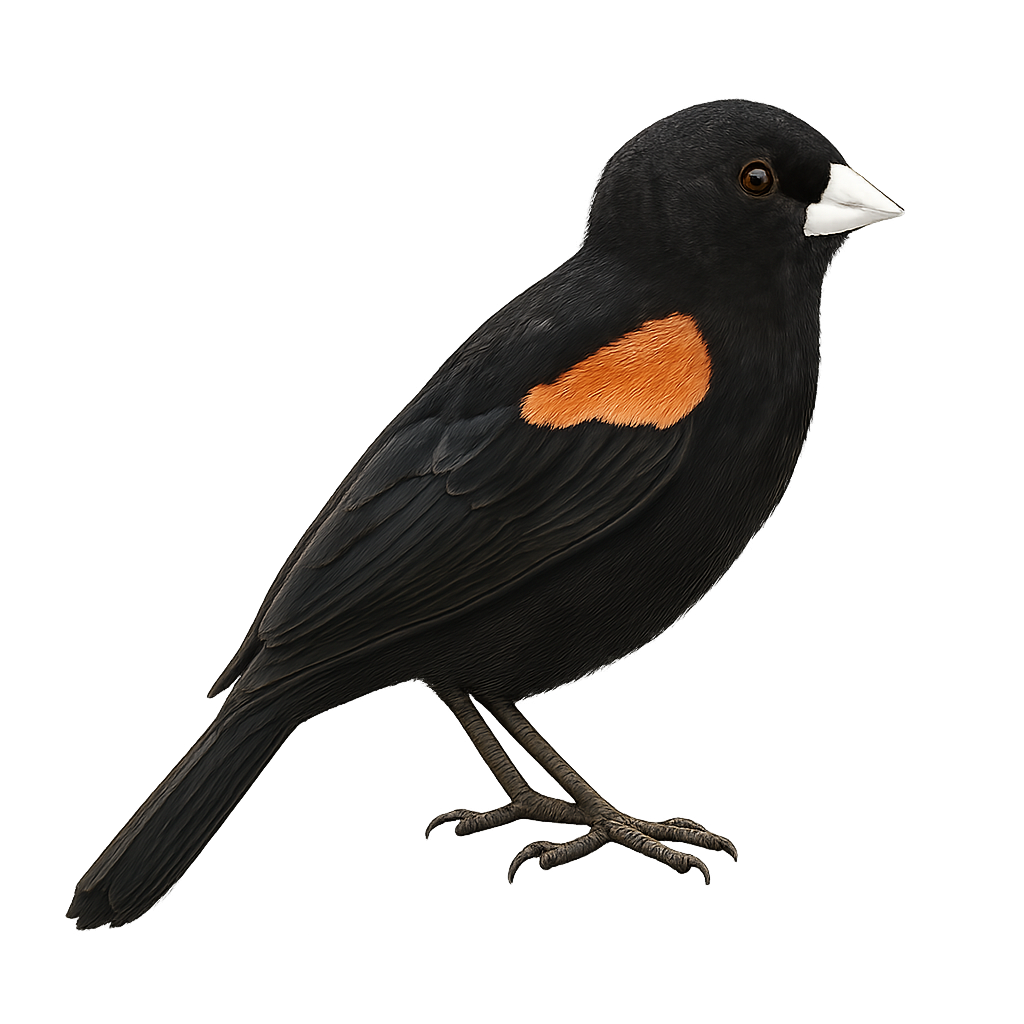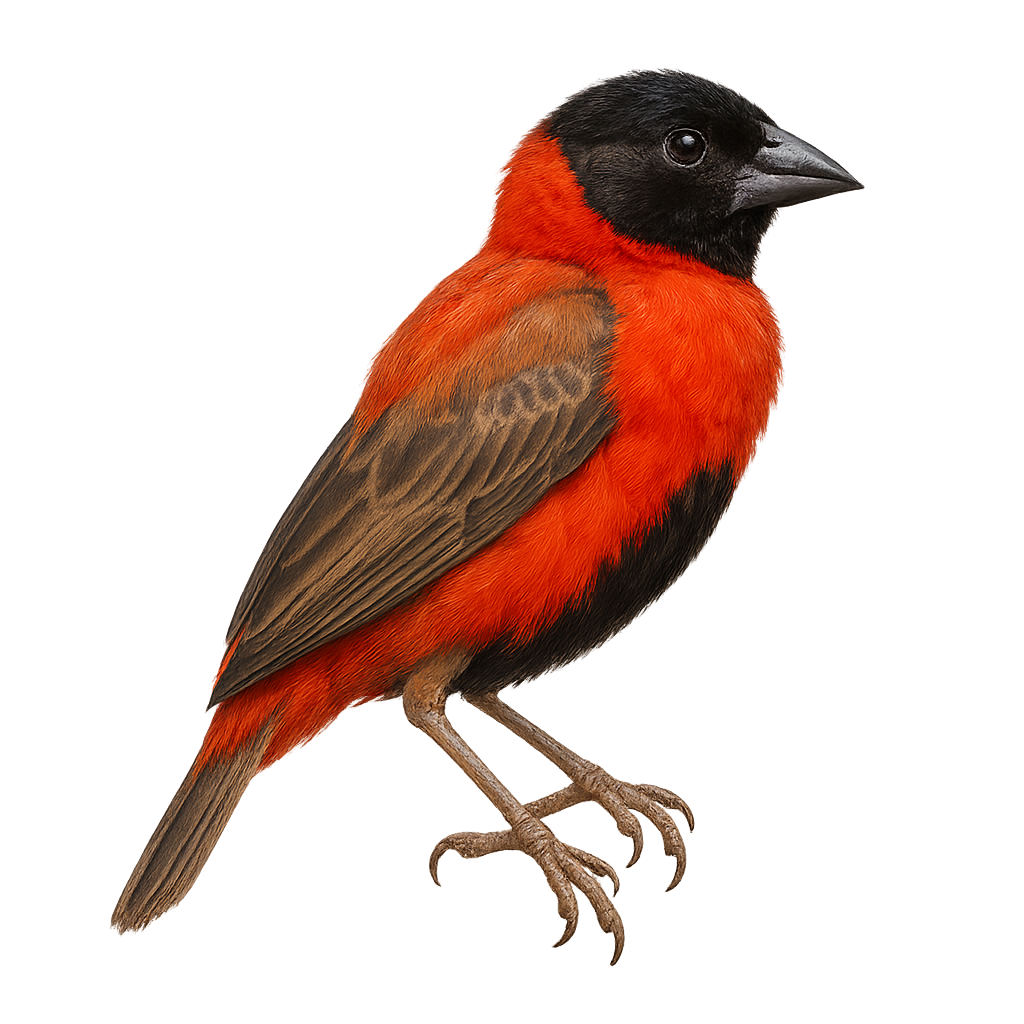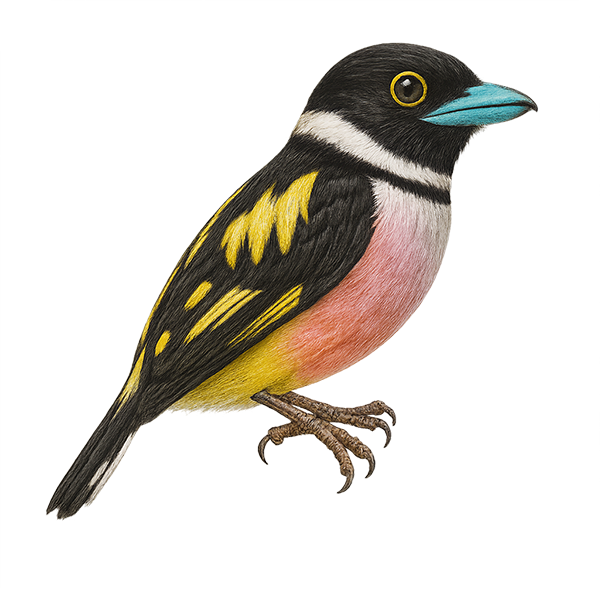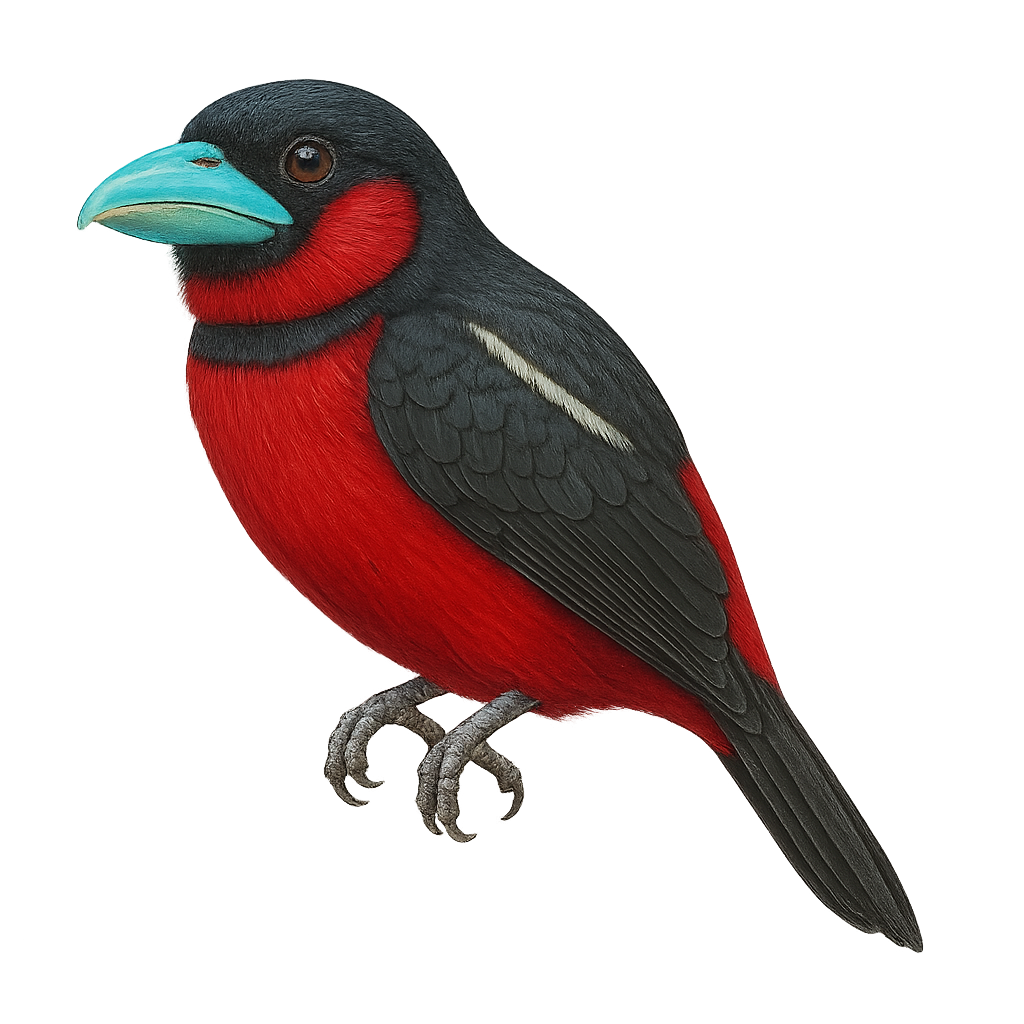The Black-breasted Puffleg, or Eriocnemis nigrivestis, is a hummingbird endemic to the Ecuadorian Andes. This small bird is particularly recognizable by its black crest and white feather tufts on its legs, which give it its name. Males display a shiny black plumage with bluish hues, while females are duller with greenish tones. This hummingbird primarily inhabits cloud forests and shrublands at high altitudes. Unfortunately, it is considered critically endangered due to deforestation and habitat loss. Conservation efforts are crucial to ensure its survival.
The Coppery-bellied Puffleg, Eriocnemis cupreoventris, is a small, captivating bird endemic to the Andes in Colombia and Venezuela. This hummingbird is distinguished by its striking plumage, with a coppery belly that shimmers in sunlight. Males display metallic sheens on their backs and heads, while females have more subdued tones. Measuring about 10 cm in length, this bird is an essential pollinator in its natural habitat. It primarily inhabits cloud forests and shrublands at high altitudes. Its fast and agile flight allows it to feed on the nectar of tubular flowers, playing a crucial role in pollination.
The Buff-tailed Coronet, Eriocnemis vestita, is a fascinating bird from the Trochilidae family. This small hummingbird is recognizable by its fluffy white feathered legs, contrasting with its metallic green plumage. It primarily inhabits cloud forests and mountainous areas of the Andes, where it feeds on nectar and insects. Its fast and agile flight allows it to easily navigate between flowers. Although its habitat is relatively stable, it is sensitive to environmental disturbances. Males and females are similar in appearance, although males may be slightly more colorful. This hummingbird plays an essential role in pollinating the plants in its habitat.
The Musk Duck, Biziura lobata, is a diving duck native to Australia, known for its broad bill and stiff tail. Males display a lobed flap under the bill during courtship displays. This duck prefers large freshwater bodies like lakes and swamps, feeding mainly on mollusks, crustaceans, and aquatic insects. Although often solitary, it can be seen in small groups. Its ability to dive deeply and stay underwater for extended periods makes it an effective hunter. The species is currently classified as Least Concern by the IUCN but is sensitive to environmental changes and habitat degradation.
The white-headed duck is a small diving duck, 40–45 cm long, with males displaying a white head, slate-grey body and bright blue bill, while females have a brownish head and darker bill. It inhabits freshwater lakes and ponds fringed by dense emergent vegetation, diving to feed mainly on aquatic plants and small invertebrates. Shy and solitary, it typically swims away under water when threatened rather than flying.
The Ruddy Duck is a small diving duck with distinctive plumage. The male has a black head with a bright blue bill, a reddish-brown body, and often holds its tail upright. The female is more subdued, with brown plumage and subtler facial patterns. These ducks are commonly found in North American wetlands but have also been introduced to Europe. They prefer calm waters rich in vegetation, feeding mainly on aquatic plants, insects, and small crustaceans. Their behavior is generally not very shy, making them accessible for observation. They are known for their spectacular courtship displays, where the male shows off his blue bill and upright tail to attract the female.
The Masked Duck is a small diving duck known for its unique plumage and elusive behavior. Males display a striking rufous plumage with a black head and a distinctive white mask, while females and juveniles are duller with brownish patterns. This species prefers dense aquatic habitats such as marshes and ponds with abundant vegetation. It is primarily nocturnal, feeding on aquatic plants, insects, and small invertebrates. Although widely distributed in the Caribbean and parts of Central and South America, it remains difficult to spot due to its shy nature and habit of hiding in dense vegetation.
The Long-tailed Hermit, or Phaethornis superciliosus, is a fascinating hummingbird found mainly in the tropical forests of South America. This small bird is recognizable by its long, curved bill, perfect for extracting nectar from tubular flowers. Its plumage is primarily brown with greenish hues and a distinctive stripe above the eye, giving it the name "superciliosus". It is often seen darting from flower to flower, playing a crucial role in pollination. Although generally solitary, it can sometimes be observed in small groups during the breeding season. Its ability to adapt to various habitats, including forest edges and gardens, makes it a resilient bird despite environmental threats.
The Stripe-throated Hermit, or Phaethornis striigularis, is a small hummingbird native to the tropical rainforests of Central and South America. This tiny bird, measuring about 10 to 12 cm in length, is recognizable by its brown-green plumage and white-striped throat. It has a long, curved bill, perfect for feeding on the nectar of tubular flowers. Males and females look similar, although males often have slightly brighter colors. The Stripe-throated Hermit is a solitary bird, often seen darting quickly from flower to flower. It plays a crucial role in the pollination of tropical plants.
The Rupununi Hermit, or Phaethornis rupurumii, is a fascinating hummingbird primarily inhabiting the humid forests and forest edges of South America, particularly in Brazil and Guyana. This small bird, measuring about 12 to 14 cm in length, is distinguished by its olive-brown plumage and long, tapered tail. Its curved beak is perfectly adapted for feeding on the nectar of tubular flowers. The Rupununi Hermit is a solitary bird, often observed darting quickly from flower to flower, playing a crucial role in the pollination of many tropical plants. Although its habitat is relatively stable, deforestation poses a potential threat to its population.
The Black Hermit, Threnetes niger, is a discreet and fascinating hummingbird primarily found in the dense tropical forests of Central and South America. This small bird is recognizable by its dark plumage and slightly curved bill, adapted for extracting nectar from tubular flowers. Although its appearance is modest compared to other hummingbirds, the Black Hermit plays a crucial role in the pollination of plants in its habitat. It is often seen darting quickly from flower to flower, emitting high-pitched, buzzing sounds. Its ability to blend into its environment makes it difficult to spot, but its presence is essential to the ecological balance of its ecosystem.
The Mexican Hermit, or Phaethornis mexicanus, is a fascinating hummingbird primarily inhabiting the tropical rainforests of Mexico and Central America. This small bird is distinguished by its brown-green plumage, long curved beak, and spatula-shaped tail. It is often seen darting swiftly from flower to flower, using its specialized beak to extract nectar. The Mexican Hermit plays a crucial role in the pollination of local plants. Although mostly solitary, it can sometimes be seen in small groups during the breeding season. Its song is a soft hum, often heard before it is seen. Despite its delicate appearance, this bird is resilient and adapts well to its environment, although it is threatened by deforestation.
The Spot-backed Hermit, or Ramphodon naevius, is a fascinating hummingbird native to the humid tropical forests of southeastern Brazil. This small bird is distinguished by its brown-green plumage with white spots on its back, giving it a unique appearance. Its long, curved beak is perfectly adapted for feeding on the nectar of tubular flowers, a common trait among hummingbirds. The Spot-backed Hermit is often observed flying quickly from flower to flower, playing a crucial role in the pollination of local plants. Although primarily solitary, it can sometimes be seen in small groups during the breeding season. Its ability to adapt to different habitats, including secondary forests and gardens, makes it a resilient species despite deforestation threats.
The Green Hermit, or Phaethornis guy, is a captivating hummingbird found primarily in the humid tropical forests of Central and South America. This small bird is recognizable by its bright green plumage and distinctive long tail. Both males and females exhibit similar features, although males often have longer tails. They primarily feed on nectar, using their long curved bills to reach tubular flowers. In addition to nectar, they also consume small insects to supplement their diet. Green Hermits are known for their territorial behavior, vigorously defending their food sources against intruders. Their fast and agile flight is a spectacle to behold, especially as they move from flower to flower.
The Chestnut-cheeked Starling, scientifically known as Agropsar philippensis, is a medium-sized bird belonging to the Sturnidae family. It is easily identifiable by its silvery-grey plumage and distinctive chestnut cheeks. This bird is primarily arboreal, feeding on fruits, insects, and nectar. It inhabits tropical and subtropical forests, as well as agricultural areas and gardens. Known for its varied and melodious vocalizations, the Chestnut-cheeked Starling is currently classified as "Least Concern" by the IUCN, although deforestation and habitat loss pose potential threats. This sociable bird is often seen in small flocks.
The Chestnut-tailed Starling, or Sturnia malabarica, is a medium-sized bird belonging to the Sturnidae family. It is primarily found in South Asia, notably in India, Nepal, and Sri Lanka. This bird is distinguished by its brownish-grey plumage with a chestnut tail and a lighter head. Chestnut-tailed Starlings typically live in groups and are often seen in wooded areas, gardens, and farmlands. They primarily feed on insects, fruits, and nectar. Their song is melodious and varied, making them pleasant to listen to. Although they are widely distributed, their habitat is sometimes threatened by deforestation and increasing urbanization.
The White-cheeked Starling is a medium-sized bird, measuring about 24 cm in length. It is easily recognizable by its ash-gray plumage, white cheeks, and bright yellow beak. This bird is mainly found in East Asia, particularly in China, Japan, and Korea. It frequents urban areas, parks, and gardens, as well as forests and agricultural zones. The White-cheeked Starling is a social bird, often seen in groups. It primarily feeds on insects, fruits, and seeds. Its song is varied and melodious, making it a favorite among birdwatchers.
The European starling is a very social bird found across Europe, Asia, and North America. It is easily recognized by its iridescent plumage, which changes color depending on the light. This bird is highly adaptable, living in both urban and rural environments. The European starling is also an excellent imitator, capable of mimicking a variety of sounds, including calls of other birds and human noises. Its ability to form large flocks makes it an ideal subject for group photography.
The Spotless Starling is a medium-sized bird, measuring about 21 to 23 cm in length with a wingspan of 37 to 42 cm. Its plumage is predominantly black with metallic green and purple sheens, distinguishing it from the common starling. It is endemic to the Iberian Peninsula and northwest Africa. This bird is often seen in flocks, especially outside the breeding season. It inhabits various environments, including agricultural areas, urban parks, and open woodlands. Its diet is diverse, consisting of insects, fruits, and seeds. The Spotless Starling is known for its melodious song and ability to mimic other sounds.
The Koklass Pheasant, or Pucrasia macrolopha, is a medium-sized bird belonging to the Phasianidae family. It is primarily found in the mountainous forests of Asia, particularly in India, Pakistan, China, and Nepal. This pheasant is distinguished by its colorful plumage and long crest. Males display vibrant colors with intricate patterns, while females are duller, allowing them to camouflage more effectively. The Koklass Pheasant is a diurnal bird that feeds mainly on seeds, berries, and insects. It is known for its territorial behavior, especially during the breeding season. Although relatively tolerant of human presence, it prefers remote and undisturbed areas.
The Yellow-shouldered Widowbird is a small bird from the Ploceidae family, predominantly found in the humid regions of sub-Saharan Africa. This passerine is notable for the male's glossy black plumage with striking yellow shoulder patches, while the female is more subdued in brown tones. Males are particularly eye-catching during the breeding season, displaying long tail feathers to attract females. They live in flocks and are often seen in wet grasslands, marshes, and agricultural areas. Their diet mainly consists of seeds, but they also eat insects. Although their population is stable, habitat destruction remains a potential threat.
The Northern Red Bishop is a small African bird with striking plumage, especially during the breeding season. Males display bright red feathers with black wings and tail, while females and non-breeding males have duller, brownish tones. These birds inhabit savannas, marshes, and wet grasslands in sub-Saharan Africa. They are known for their social behavior and spectacular courtship displays, where males puff up their feathers to attract females. Their diet mainly consists of seeds, but they also consume insects. Although they are widespread, their habitat is threatened by deforestation and agricultural expansion.
The Southern Red Bishop, scientifically known as Euplectes orix, is a small passerine bird belonging to the Ploceidae family. It is easily identifiable by its striking plumage, particularly in breeding males, which display a vibrant red contrasted with black. Females and non-breeding males are duller, with brownish hues. This bird is primarily found in sub-Saharan Africa, frequenting marshes, wet grasslands, and cultivated areas. It is renowned for its spectacular courtship displays, where the male puffs up its feathers to attract females. The Southern Red Bishop primarily feeds on seeds, but also consumes insects, especially during the breeding season.
The Helmet Vanga, Euryceros prevostii, is an endemic bird of Madagascar, known for its distinctive casque-shaped bill. This large, curved bill is essential for feeding, primarily on insects and small invertebrates found in the island's humid tropical forests. Its plumage is mainly blue-black with metallic sheen, and it features white markings on the wings. The Helmet Vanga is a social bird, often seen in small groups. It plays a crucial role in the ecosystem by helping control insect populations. Unfortunately, deforestation threatens its natural habitat, making it a vulnerable species.
The Black-and-yellow Broadbill is a captivating bird, easily identifiable by its vibrant plumage and distinctive black cap. It primarily inhabits the tropical forests of Southeast Asia, where it feeds on insects and fruits. Its melodious song and vivid colors make it a favorite among birdwatchers. This bird is often seen in pairs or small groups, moving nimbly among the branches. Although its habitat is threatened by deforestation, it remains relatively common in some areas. The Black-and-yellow Broadbill builds hanging nests, often over water, to protect its eggs from predators.
The Black-and-red Broadbill is a striking bird known for its vibrant plumage and large bill. It features a vivid combination of black and red body with a broad, pale blue bill. This bird is primarily arboreal and found in the tropical forests of Southeast Asia, including Thailand, Malaysia, and Indonesia. It feeds mainly on insects and small fruits, which it skillfully captures with its powerful bill. The Black-and-red Broadbill is often seen in pairs or small groups and is known for its melodious calls. Although its habitat is threatened by deforestation, it is currently classified as Least Concern by the IUCN.
The Blue Bunting, or Cyanocompsa parellina, is a medium-sized songbird belonging to the Cardinalidae family. It is primarily found in the tropical and subtropical regions of Central America, particularly in Mexico and Guatemala. This bird is distinguished by its bright blue plumage in males, while females have duller, often brownish tones. The Blue Bunting is a discreet bird, often seen foraging for seeds and insects in dense undergrowth. It is known for its melodious song, often heard at dawn and dusk. Although not currently threatened, deforestation poses a potential risk to its natural habitat.
The Silver Pheasant, Lophura nycthemera, is an elegant and majestic bird native to the forests of Southeast Asia. It is easily recognizable by its silvery-white plumage in males, contrasting with its long tail and red legs. The female, more discreet, has brown plumage. These birds prefer dense, humid forests, where they feed on seeds, fruits, and insects. Their behavior is generally suspicious, but they can become accustomed to human presence in protected areas. The Silver Pheasant plays an important role in its ecosystem by dispersing seeds and controlling insect populations.
The Common Pheasant, or Colchian Pheasant, is a medium to large-sized bird, easily recognizable by its bright colors and silky plumage. The adult male is particularly spectacular, with shiny plumage in shades of green, red, gold, and blue, and a long tail adorned with fine feathers. It measures about 70 cm in length, most of which is its tail, and weighs between 0.8 and 1.5 kg. The female, more discreet, has brown spotted plumage that helps her blend into her surroundings. Native to Asia Minor and the Caucasus region, the Colchian Pheasant has been introduced to many parts of the world for hunting and decoration. It typically inhabits wooded areas, cultivated fields, and grasslands. Its diet is omnivorous, consisting of seeds, berries, insects, and sometimes small vertebrates. The species is mainly active at dawn and dusk. While the Common Pheasant is not threatened, it faces risks such as habitat loss, excessive hunting, and predation by carnivores.
The Hume's Pheasant, or Syrmaticus humiae, is an elegant and rare bird native to the mountainous forests of Southeast Asia, particularly in Myanmar, China, and India. This pheasant is distinguished by its striking plumage, featuring shades of brown, blue, and white, and a characteristic long tail. Males display more vibrant colors than females, who are more subdued. They primarily inhabit oak and pine forests, where they feed on seeds, fruits, and insects. The Hume's Pheasant is a shy and discreet species, often difficult to spot in its natural habitat. Its population is threatened by deforestation and hunting, making it a protected species.



